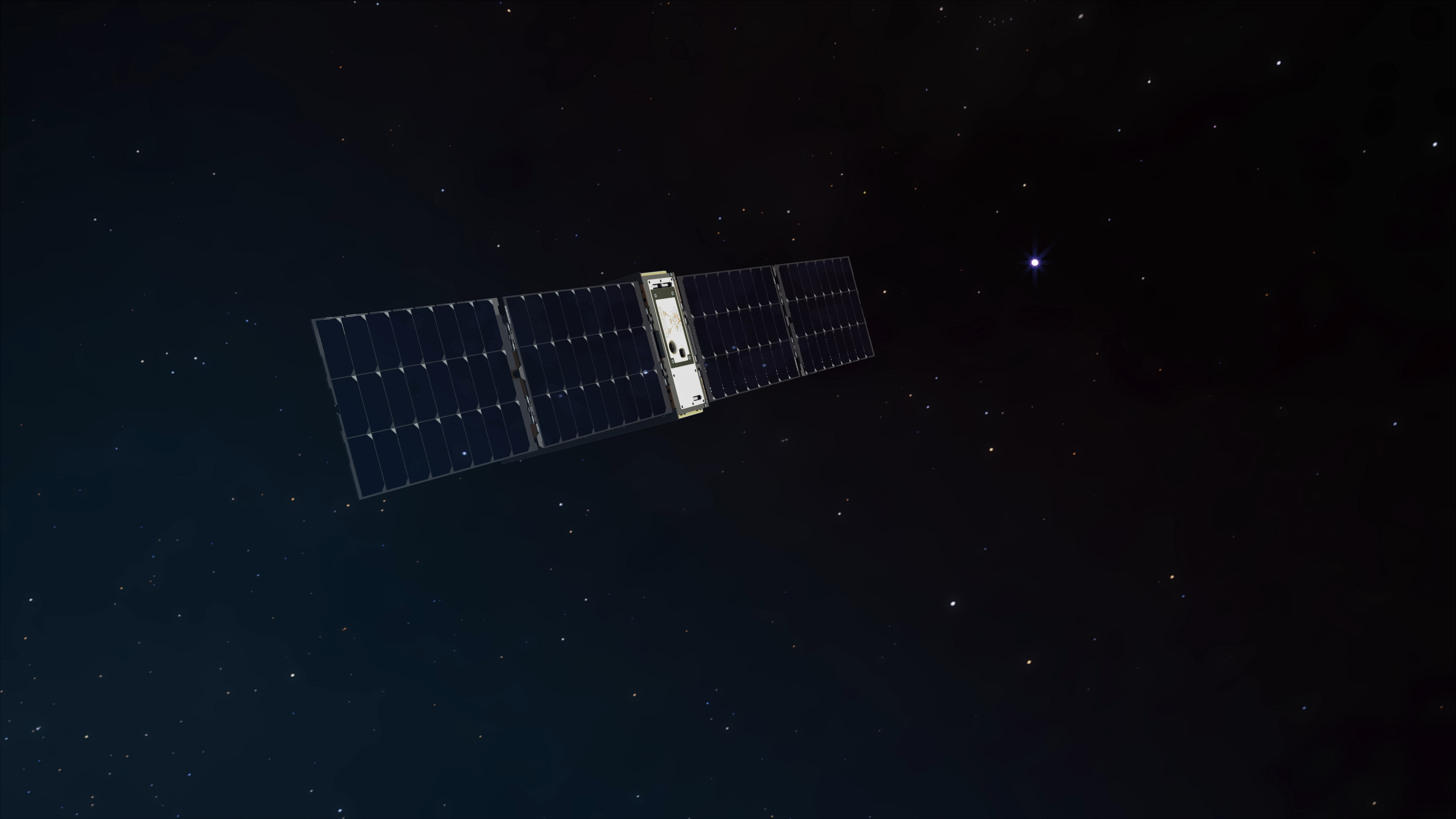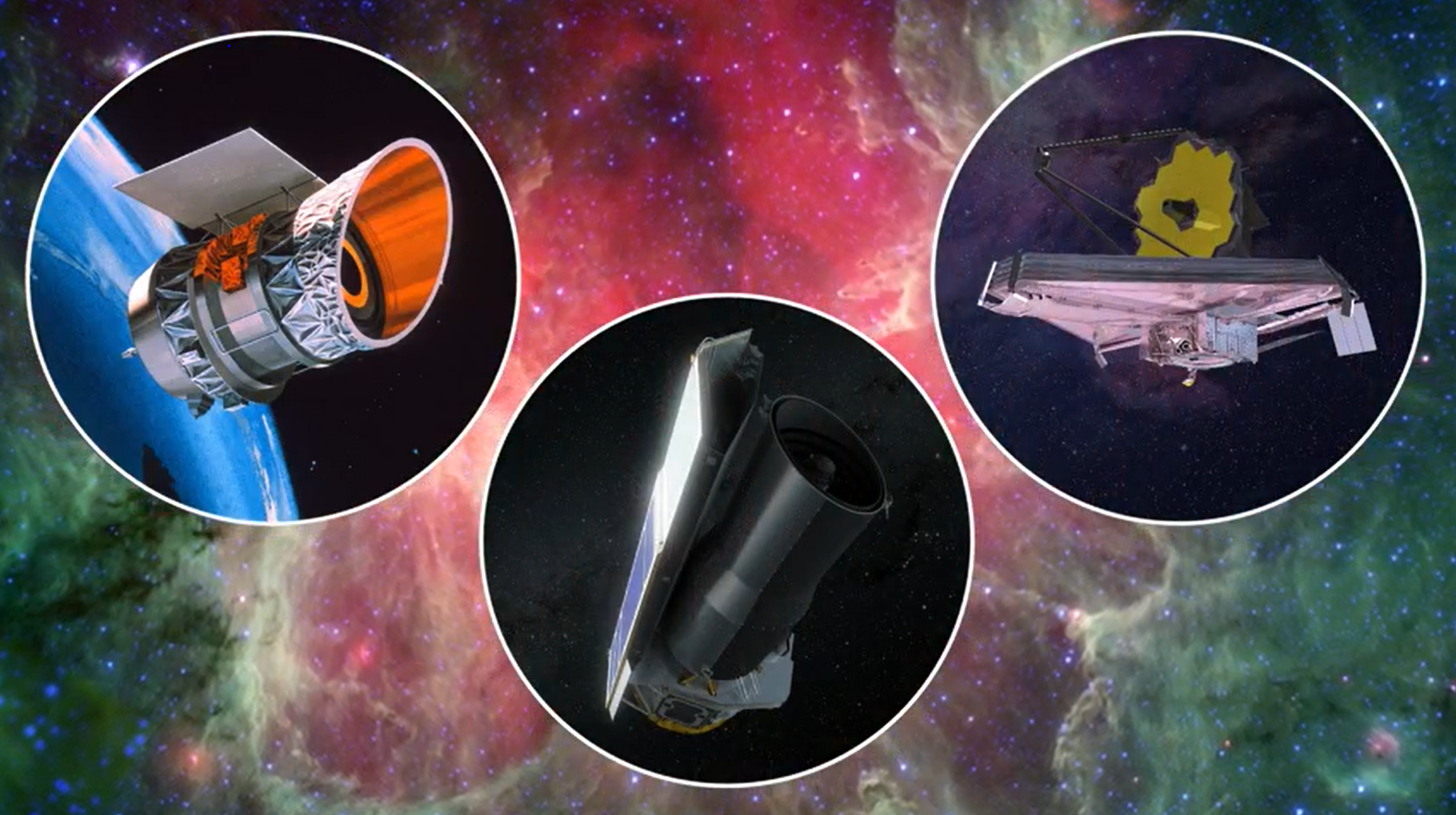5 min read
Our neighboring planet, Mars, may be responsible for the literary genre of science fiction. It was after the supposed discovery of “canals” on Mars, popularized in the late 19th century first by Giovanni Schiaparelli in Europe and then by Percival Lowell in the US, that stories of aliens equipped with light sabers became popular.
In the last two decades we humans have turned the tables on the Martians with the use of lasers to explore the red planet. While the lasers used for exploration are not the heat rays envisioned in H.G. Wells’ War of the Worlds, these light beams have been used in a variety of ways.
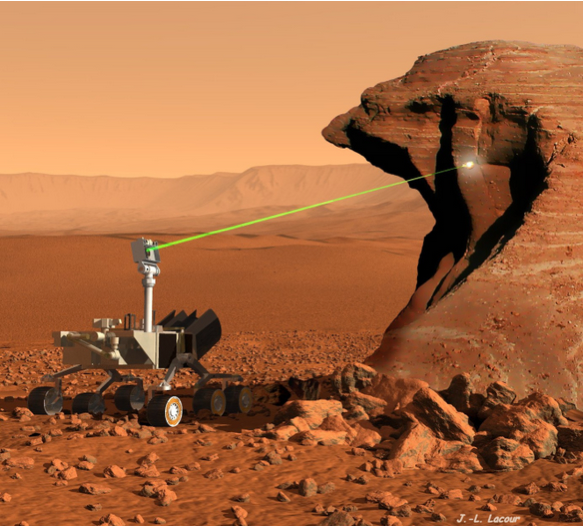
The term “laser” refers to light amplification by stimulated emission of radiation. Lasers use a phenomenon from atomic physics to produce monochromatic light beams that are coherent (all photons are in phase with each other) and tightly collimated. “Monochromatic” means that these beams have a single wavelength, or color. Because of these qualities, laser beams can be used in unique ways. The light is usually produced by electrically stimulating a crystal to produce light that is mostly a single wavelength. Lasers use an oscillator cavity that allows photons of this wavelength to resonate, enhancing the signal over time.
The first laser extensively used around Mars mapped the elevation of the planet’s surface from orbit. The Mars Orbiter Laser Altimeter (MOLA) on Mars Global Surveyor spacecraft was launched in 1996. From a nearly circular orbit this instrument fired short infrared laser pulses 8 billionths of a second long at a rate of ten per second. The laser beam illuminated a spot a little larger than a football field at the surface, and consecutive shots sampled the surface with a separation of about three football fields. Some of the light reflected off the surface and made it back to a sensor on the instrument after a travel time of about two thousandths of a second. The precise timing of the return signal provided the altitude of the surface. The average height of the surface could be measured with an accuracy of about 0.3 meters. The topographic maps of Mars allowed scientists to search for paleo-shorelines of ancient lakes or seas on Mars, among other things.
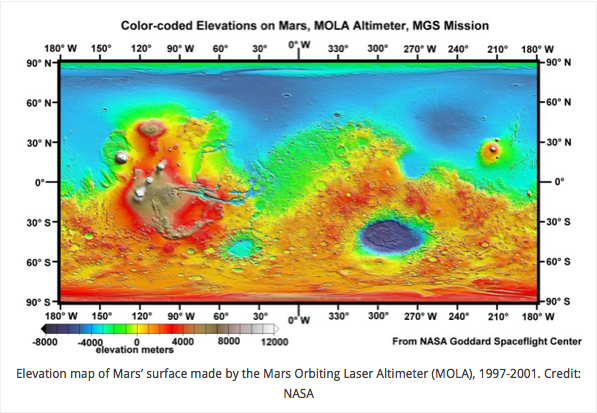
The Curiosity rover now working to climb Mars’ Mount Sharp is equipped with a similar laser. At close range (for targets within 7 meters) the ChemCam instrument’s laser produces small flashes of light as it ionizes material on rock surfaces and in soils. The color spectrum of these brief flashes is used to determine the composition of the targets. A small shock wave brushes away dust from the impact point, and ChemCam can excavate small distances into rocks and soils. Using a point-and-shoot approach allows many more targets to be analyzed than if the rover had to drive up to each target of interest. ChemCam has returned over 200,000 spectra from Mars as of 2015.
NASA is developing plans for a new rover to explore another region of Mars and to collect samples for return to Earth in the coming decade. This rover will be equipped with SuperCam, a more advanced laser instrument that will use ChemCam’s laser ablation technique along with introducing another laser technique called Raman spectroscopy. Using this technique SuperCam will determine the mineral makeup of targets in addition to the elemental compositions returned by ChemCam’s technique.
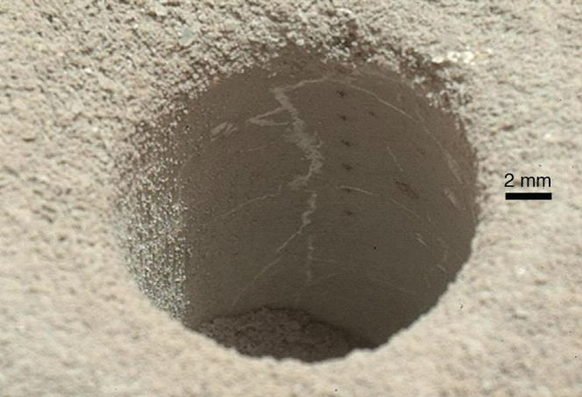
Lasers have also found uses in looking for clouds in Mars’ atmosphere and in internal instruments inside the rovers. One laser instrument on Curiosity helps sniff for methane in Mars’ atmosphere while another laser instrument is planned for fine-scale searches for organic molecules with NASA’s future Mars rover.
With all these lasers on the red planet, if Martians didn’t have laser gun technology already, they would really learn from us humans!

Roger Wiens started studying Mars at age 12 when he and his brother assembled a telescope in time for the red planet’s close approach to Earth. He wrote the first PhD thesis on the Mars atmosphere as measured in a terrestrial laboratory, thanks to the discovery of meteorites that brought a sample of the Mars atmosphere with them. He has been inventing and building NASA instruments at Los Alamos National Laboratory since 1997. Wiens was one of the leaders of the Genesis spacecraft, the first robotic craft to return to Earth from beyond the Moon, but which crashed in the Utah desert with its solar-wind samples. In spite of the crash, Wiens’ samples made the cover of Science magazine after they revealed that the oxygen isotopic composition of the Sun is very different from Earth’s. In 2004 NASA selected Wiens’ ChemCam laser proposal for the Curiosity rover, and he has led the French-US team through its development, testing, and now exploration on the red planet. In addition to the current Mars exploration Dr. Wiens is leading the development of the SuperCam instrument to launch to Mars in 2020 on NASA’s next rover. His book, Red Rover: Inside the Story of Robotic Space Exploration from Genesis to the Mars Rover Curiosity (Basic Books, 2013) describes his space adventures.


